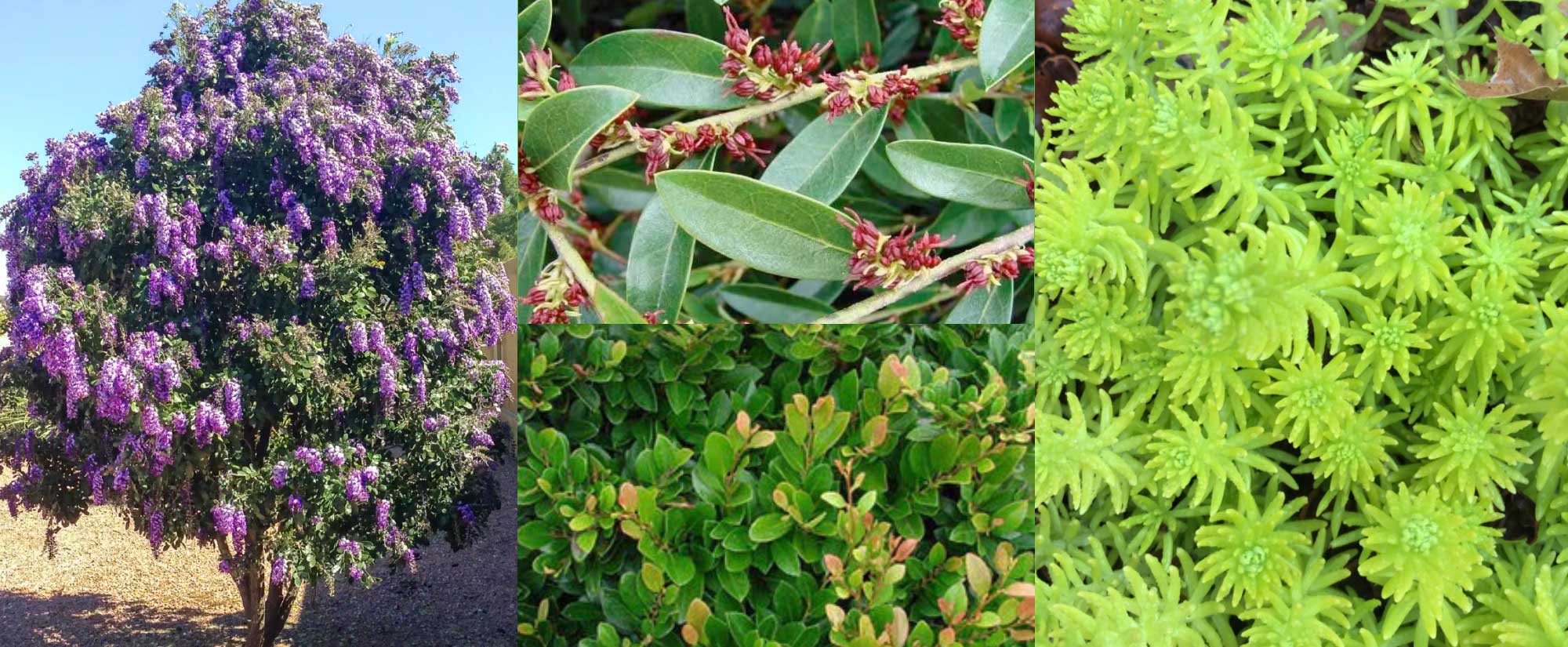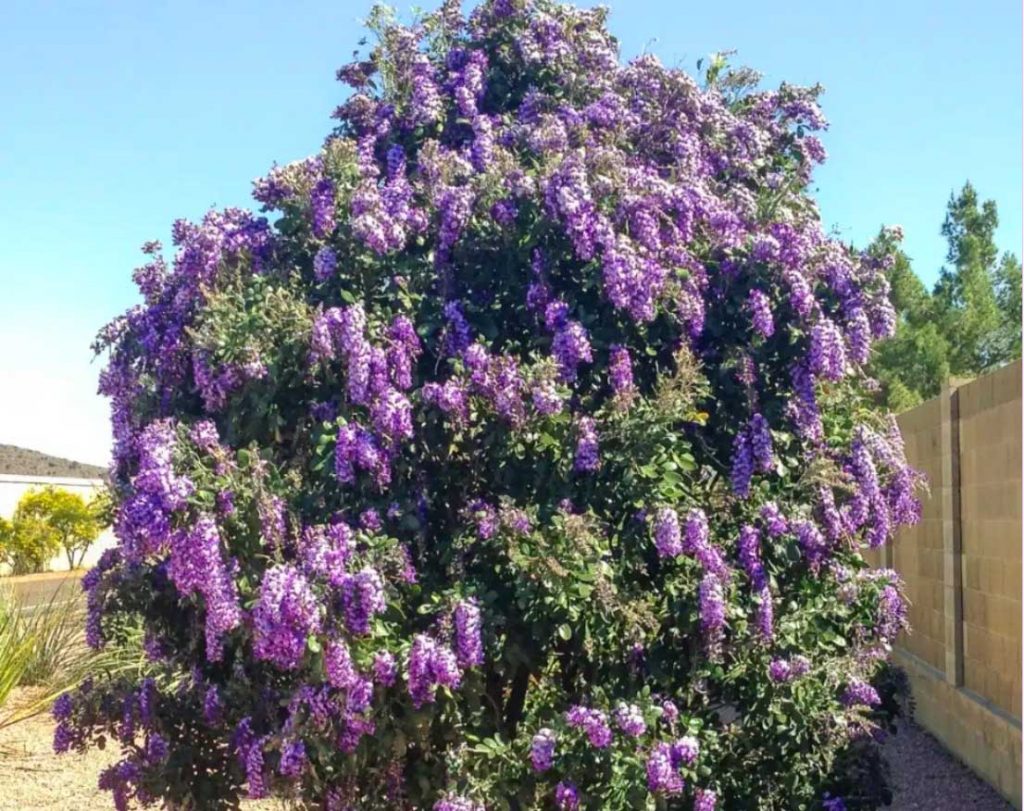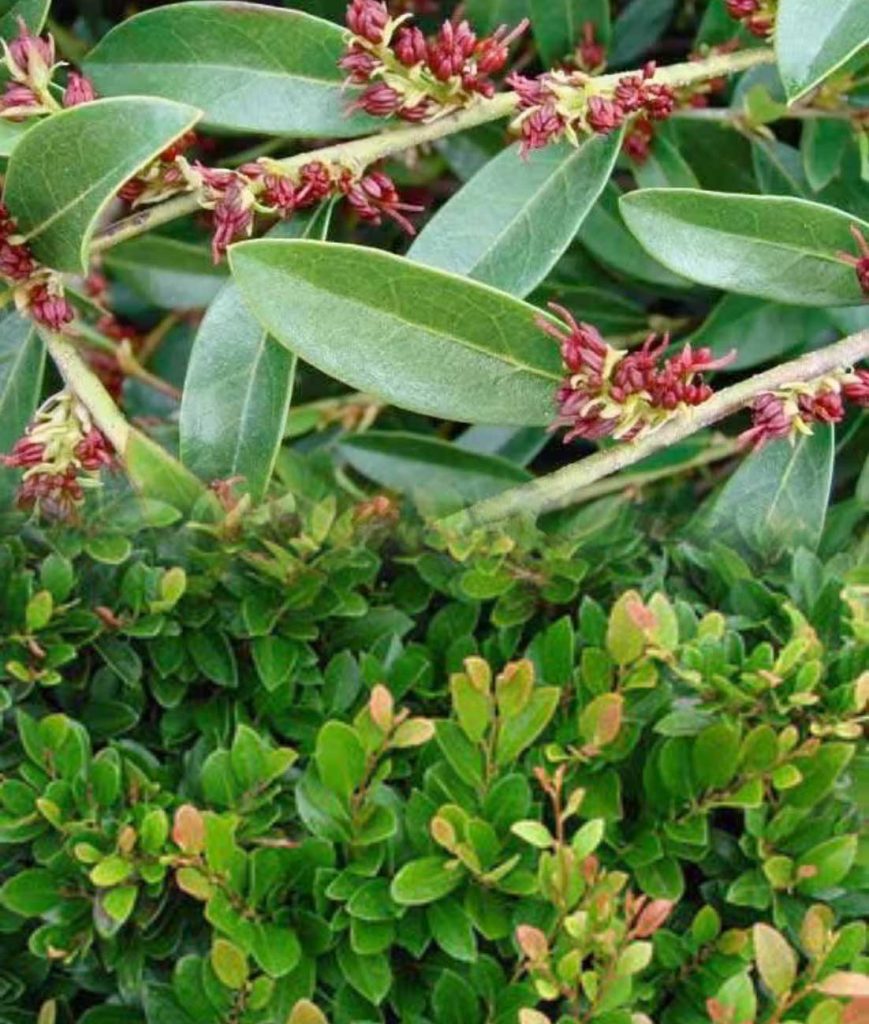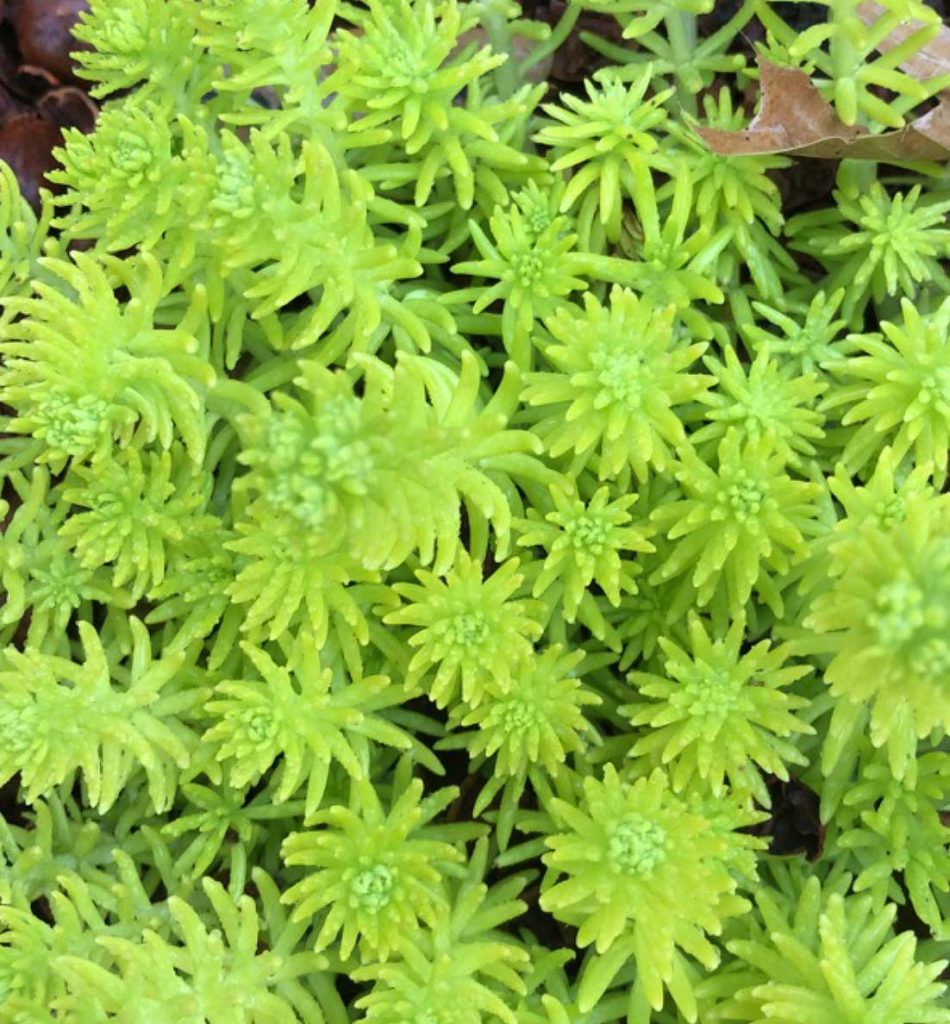
Tree of the month:
The Texas Mountain Laurel (Dermatophyllum secundiflorum) is a native evergreen shrub or small tree renowned for its fragrant purple spring flowers. Contrary to its name, it is unrelated to the true mountain laurel (Kalmia latifolia) of the Eastern U.S. and thrives in the arid, rocky soil of its native range. The flowers are followed by semi-woody seed pods that contain bright red, hard seeds. These seeds are highly poisonous, containing the toxic alkaloid cytisine. Historically, indigenous peoples have valued seeds for ceremonial and ornamental purposes, including the creation of necklaces. The distinct fragrance of the Texas Mountain Laurel is best appreciated when viewed up close, making it an ideal choice as a specimen tree near an entryway, patio, or courtyard. It can also be planted as a fragrant screen or hedge.
Key Features of the Texas Mountain Laurel:
Flowers:
The tree produces striking 3–7 inch clusters of purple, pea-like flowers in early spring (February–April). The blooms have a strong, sweet, and unique fragrance often compared to artificial grape products, such as grape soda or grape bubblegum.
Foliage:
Texas mountain laurel is an evergreen with handsome, dense, and glossy dark green leaves. Each compound leaf consists of 7 to 9 shiny, leathery leaflets.
Growth habit:
It is a slow-growing plant that can be cultivated as a multi-trunked shrub or trained into a small tree. It typically matures to a height of 10–15 feet, though it can reach up to 30 feet in some conditions.

Shrub of the month:
Cinnamon Girl Distylium (Distylium myricoides ‘Cinnamon Girl’) is a compact, evergreen shrub renowned for its vibrant foliage and adaptability in various landscape settings. It stands as a durable and low-maintenance alternative to boxwoods and Indian hawthorns, particularly in warmer climates where these plants are susceptible to pests and diseases. The small size, refined texture, and adaptability of Cinnamon Girl Distylium make it an ideal choice for numerous landscape applications.
Key Features of the Cinnamon Girl Distylium:
Flowers:
In late winter to early spring, the shrub produces small, red, spider-like flowers that are often one of the first signs of color in the garden.
Foliage:
New growth emerges in plum-purple before maturing to a distinctive blue-green hue. This provides multi-season interest. The leaves are smaller and have a finer texture than other distylium varieties.
Growth Habit:
It has a dense, compact, and spreading growth habit. It typically grows to a height of 2 to 3 feet and a width of 3 to 4 feet.

Perennial of the Month:
Mexican Sedum, also known as Mexican stonecrop, is a group of low-growing, drought-tolerant succulent plants native to Mexico and its surrounding regions. These succulents thrive in dry soil and require minimal watering. Thorough watering is followed by allowing the soil to dry out completely before watering again to prevent root rot. Sedum mexicanum, with its mat-forming habit, is ideal for creating a lush, low-maintenance groundcover. It can be used to fill in gaps between rocks or cascade over walls. Additionally, Mexican sedum works well in containers, where it can be used as a “filler” or “spiller” to complement other plants.
Key Features of the Mexican Sedum:
Flowers:
In late spring to early summer, it produces clusters of small, star-shaped, golden-yellow flowers on leafy stalks that can reach up to 12 inches high.
Appearance:
This evergreen plant features bright green, fleshy leaves arranged in whorls around the branched stems. It forms a creeping, mat-like groundcover that grows up to 8 inches tall and 24 inches wide.



